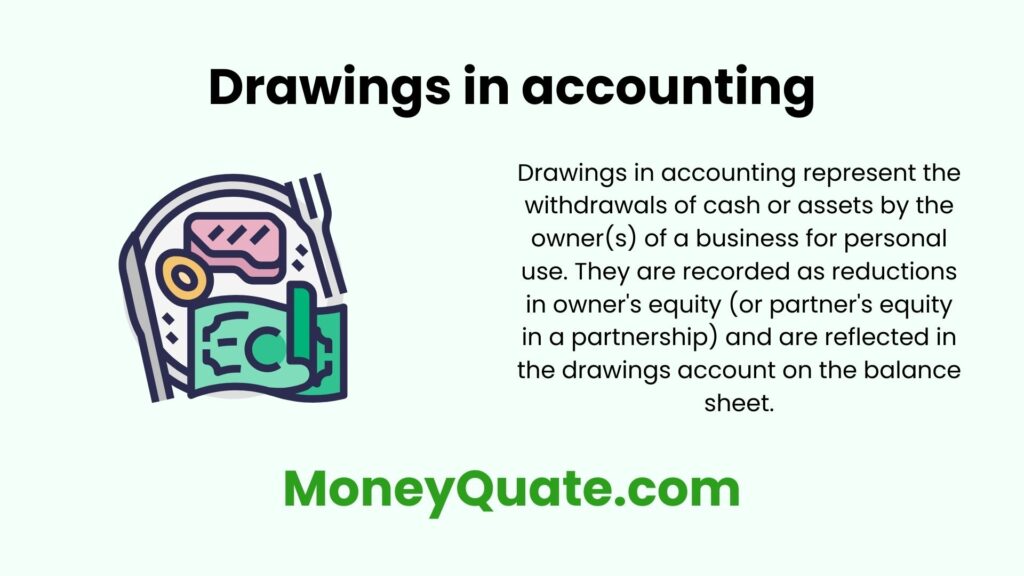Drawings in accounting refer to the withdrawals or removal of assets, typically cash, from a business by its owner(s) for personal use.
These withdrawals represent a reduction in the company’s equity because they decrease the owner’s interest in the business.
Drawings are distinct from salaries or wages, which are payments made to employees for their work and are treated as expenses in the accounting records.

Contents
Key Points
Owner’s Withdrawals
Drawings represent the removal of funds or assets by the owner(s) of the business for personal purposes, such as living expenses or personal investments.
Reduction of Equity
Since drawings reduce the owner’s stake in the business, they decrease the amount of equity held by the owner. As a result, the balance in the owner’s equity account decreases.
Recorded in the Capital Account
Drawings are typically recorded in the owner’s equity section of the balance sheet under a separate account, often labeled “Drawings” or “Owner Withdrawals.”
Not Business Expenses
Drawings are not considered business expenses because they are withdrawals of assets by the owner(s) rather than payments for goods, services, or operating expenses related to the business.
Impact on Financial Statements
Drawings do not affect the income statement because they are not business expenses.
However, they reduce the owner’s equity, which affects the balance sheet by decreasing the total equity of the business.
Example
Suppose Sarah owns a small consulting business.
Throughout the year, Sarah withdraws $1,000 each month from the business’s bank account to cover personal expenses. These withdrawals are recorded as drawings.
At the end of the year, the total drawings amount to $12,000.
This amount is subtracted from Sarah’s capital account on the balance sheet to reflect her reduced equity in the business.
Conclusion
Drawings in accounting represent withdrawals of assets by the owner(s) of a business for personal use.
While they reduce the owner’s equity in the business, they are not considered business expenses and do not impact the income statement.
Instead, drawings are recorded in the owner’s equity section of the balance sheet to reflect the reduction in the owner’s stake in the business.